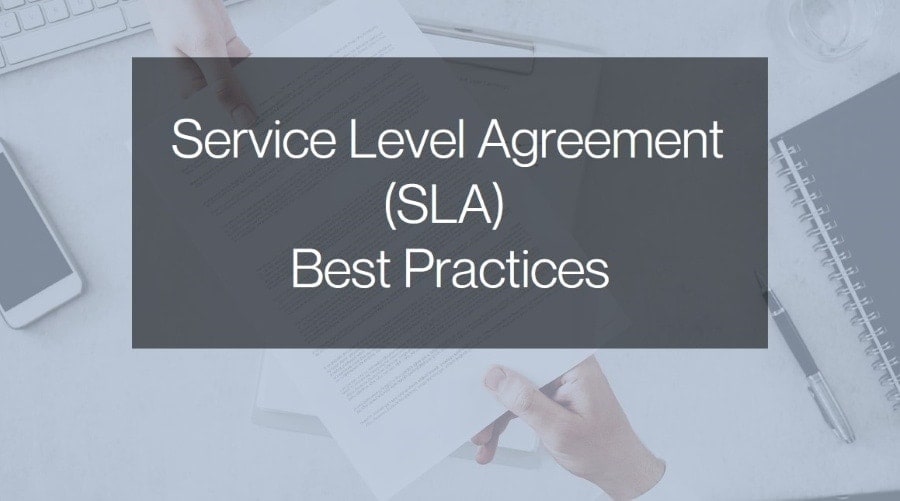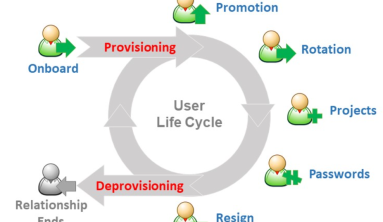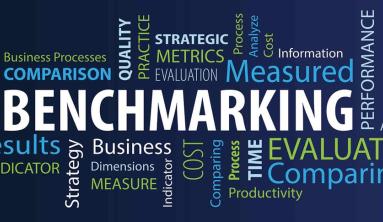SLAs are a critical component of any outsourcing and technology vendor contract. Beyond listing expectations of service type and quality, an SLA provides remedies when requirements aren’t met.
Following are answers to common questions about SLAs and tips on how your organization can craft effective SLAs with your vendors and partners.
What is an SLA?
A service-level agreement (SLA) defines the level of service expected by a customer from a supplier, laying out the metrics by which that service is measured, and the remedies or penalties, if any, should the agreed-on service levels not be achieved. Usually, SLAs are between companies and external suppliers, but they may also be between two departments within a company.
A telecom company’s SLA, for example, may promise network availability of 99.999 percent (for the mathematically disinclined, that works out to about five and a quarter minutes of downtime per year, which, believe it or not, can still be too long for some businesses), and allow the customer to reduce their payment by a given percentage if that is not achieved, usually on a sliding scale based on the magnitude of the breach.
Why do I need an SLA?
SLAs are an integral part of an IT vendor contract. An SLA pulls together information on all of the contracted services and their agreed-upon expected reliability into a single document. They clearly state metrics, responsibilities and expectations so that, in the event of issues with the service, neither party can plead ignorance. It ensures both sides have the same understanding of requirements.
Any significant contract without an associated SLA (reviewed by legal counsel) is open to deliberate or inadvertent misinterpretation. The SLA protects both parties in the agreement.
Ideally, SLAs should be aligned to the technology or business objectives of the engagement. Misalignment can have a negative impact on deal pricing, quality of service delivery, and customer experience.
Who provides the SLA?
Most service providers have standard SLAs — sometimes several, reflecting various levels of service at different prices — that can be a good starting point for negotiation. These should be reviewed and modified by the customer and legal counsel, however, since they are usually slanted in favor of the supplier.
When sending out an RFP, the customer should include expected service levels as part of the request; this will affect supplier offerings and pricing and may even influence the supplier’s decision to respond. For example, if you demand 99.999 percent availability for a system, and the supplier is unable to accommodate this requirement with your specified design, it may propose a different, more robust solution.
What’s in an SLA?
The SLA should include not only a description of the services to be provided and their expected service levels, but also metrics by which the services are measured, the duties and responsibilities of each party, the remedies or penalties for breach, and a protocol for adding and removing metrics.
Metrics should be designed so bad behavior by either party is not rewarded. For example, if a service level is breached because the client did not provide information in a timely manner, the supplier should not be penalized.
What are key components of an SLA?
The SLA should include components in two areas: services and management.
Service elements include specifics of services provided (and what’s excluded, if there’s room for doubt), conditions of service availability, standards such as time window for each level of service (prime time and non-prime time may have different service levels, for example), responsibilities of each party, escalation procedures, and cost/service tradeoffs.
Management elements should include definitions of measurement standards and methods, reporting processes, contents and frequency, a dispute resolution process, an indemnification clause protecting the customer from third-party litigation resulting from service level breaches (this should already be covered in the contract, however), and a mechanism for updating the agreement as required.
This last item is critical; service requirements and vendor capabilities change, so there must be a way to make sure the SLA is kept up-to-date.
What is an indemnification clause?
An indemnification clause is an important provision in which the service provider agrees to indemnify the customer company for any breaches of its warranties. Indemnification means that the provider will have to pay the customer for any third-party litigation costs resulting from its breach of the warranties. If you use a standard SLA provided by the service provider, it is likely this provision will be absent; ask your in-house counsel to draft a simple provision to include it, although the service provider may want further negotiation of this point.
Is an SLA transferable?
Should the service provider be acquired by or merge with another company, the customer may expect that its SLA will continue to be in force, but this may not be the fact. The agreement may have to be renegotiated. Make no assumptions; however, bear in mind that the new owner will not want to alienate existing customers, so may decide to honor existing SLAs.
How can I verify service levels?
Most service providers make statistics available, often via an online portal. There, customers can check whether SLAs are being met, and whether they’re entitled to service credits or other penalties as laid out in the SLA.
Usually these processes and methodologies are left to the outsourcing company to identify, ensuring that such processes and methodologies can support the SLA agreement. However, it’s recommended that the client and the outsourcing company work together during the SLA contract negotiation to eliminate any misunderstanding about the process and method of support as well as management and reporting methods.
For critical services, however, customers should invest in third-party tools to automatically capture SLA performance data, which provide an objective measure of performance.
What kind of metrics should be monitored?
The types of SLA metrics required will depend on the services being provided. Many items can be monitored as part of an SLA, but the scheme should be kept as simple as possible to avoid confusion and excessive cost on either side. In choosing metrics, examine your operation and decide what is most important. The more complex the monitoring (and associated remedy) scheme, the less likely it is to be effective, since no one will have time to properly analyze the data. When in doubt, opt for ease of collection of metric data; automated systems are best, since it is unlikely that costly manual collection of metrics will be reliable.
Depending on the service, the types of metric to monitor may include:
Service availability: the amount of time the service is available for use. This may be measured by time slot, with, for example, 99.5 percent availability required between the hours of 8 a.m. and 6 p.m., and more or less availability specified during other times. E-commerce operations typically have extremely aggressive SLAs at all times; 99.999 percent uptime is a not uncommon requirement for a site that generates millions of dollars an hour.
Defect rates: Counts or percentages of errors in major deliverables. Production failures such as incomplete backups and restores, coding errors/rework, and missed deadlines may be included in this category.
Technical quality: in outsourced application development, measurement of technical quality by commercial analysis tools that examine factors such as program size and coding defects.
Security: In these hyper-regulated times, application and network security breaches can be costly. Measuring controllable security measures such as anti-virus updates and patching is key in proving all reasonable preventive measures were taken, in the event of an incident.
Business results: Increasingly, IT customers would like to incorporate business process metrics into their SLAs. Using existing key performance indicators is typically the best approach as long as the vendor’s contribution to those KPIs can be calculated.
What should I consider when selecting metrics for my SLA?
The goal should be an equitable incorporation of best practices and requirements that will maintain service performance and avoid additional costs.
Choose measurements that motivate the right behavior. The first goal of any metric is to motivate the appropriate behavior on behalf of the client and the service provider. Each side of the relationship will attempt to optimize its actions to meet the performance objectives defined by the metrics. First, focus on the behavior that you want to motivate. Then, test your metrics by putting yourself in the place of the other side. How would you optimize your performance? Does that optimization support the originally desired results?
Ensure that metrics reflect factors within the service provider’s control. To motivate the right behavior, SLA metrics should reflect factors within the outsourcer’s control. A typical mistake is to penalize the service provider for delays caused by the client’s lack of performance. For example, if the client provides change specifications for application code several weeks late, it is unfair and demotivating to hold the service provider to a pre-specified delivery date. Making the SLA two-sided by measuring the client’s performance on mutually dependent actions is a good way to focus on the intended results.
Choose measurements that are easily collected. Balance the power of a desired metric against its ease of collection. Ideally, the SLA metrics will be captured automatically, in the background, with minimal overhead, but this objective may not be possible for all desired metrics. When in doubt, compromise in favor of easy collection; no one is going to invest the effort to collect metrics manually.
Less is more. Despite the temptation to control as many factors as possible, avoid choosing an excessive number of metrics or metrics that produce a voluminous amount of data that no one will have time to analyze and create excessive overhead. While less likely, too few metrics are also a problem as missing any one may mean the provide has breached the contract.
Set a proper baseline. Defining the right metrics is only half of the battle. To be useful, the metrics must be set to reasonable, attainable performance levels. Unless strong historical measurement data is available, be prepared to revisit and readjust the settings at a future date through a predefined process specified in the SLA.
Define with care. A provider may tweak SLA definitions to ensure they are met. For example, the Incident Response Time metric is supposed to ensure that the provider addresses an incident within a minimum number of minutes. However, some providers may meet the SLA 100 percent of the time by delivering an automated reply to an incident report. Customers should define SLAs clearly so that they represent the intention of the service level.
In addition to defining the services to be provided, the contract should also document how the services are to be monitored, including how the data will be captured and reported, how often it will be reviewed, and who is involved in the review.
Is there room for negotiation on SLAs with cloud service providers?
Cloud vendors are more reticent about modifying their standard SLAs because their margins are predicated on providing commodity services to many buyers. However, in some cases, customers are able to negotiate terms with their cloud providers.
Can I create joint SLAs shared among multiple vendors or service providers?
Customers can create joint metrics for multiple service providers that factor in cross-supplier impacts and account for impacts that the vendor can have on processes that are not considered in-scope to their contract.
IT organizations managing multiple service providers may want put in place operating level agreements (OLAs), which outline how particular parties involved in the process of delivering IT services will interact with each other in order to maintain performance.
If I opt for outcome-based pricing with an IT outsourcer, do I still need SLAs?
IT outsourcing deals in which service providers’ compensation is linked to business outcomes achieved have grown in popularity as companies evolve from pure time and materials or full-time-employee based pricing models.
In these cases, the outcome is a business result rather than a specific activity, task, or resource. But even in an outcome-based deal, SLAs serve as important indicators of performance against those business outcomes. SLAs for these deals will not outline technical or operational requirements for given tasks; rather, they outline end-client goals. For this approach to work well, those outcomes must be unambiguous, there must be ways to measure achievement of the outcomes, roles and responsibilities must be clearly defined, and the supplier must have control over the end-to-end service required to deliver results.
Can we create SLAs for shadow IT?
IT can harness the power of shadow IT services and solutions and mitigate associated risks by taking the same types of SLA IT uses to manage the performance of IT service providers and apply them to shadow IT. The IT organizations can take several steps to build an SLA framework for technology services delivered outside the IT organization and measure and report on their performance.
Whether or not there is wiggle room, it is critical to understand and scrutinize the SLAs in a cloud computing contract to determine whether they present any significant risk.
What happens if a provider doesn’t meet agreed-on service levels?
SLAs include agreed upon penalties, called service credits, which can be enforced when
vendors miss minimum performance standards. Provider and customer agree to put a certain percentage of monthly fees (typically equal to the vendor’s profit margin) “at risk” from which these credits are drawn when SLAs are missed. This approach is intended to incentivize provider performance without being overly punitive.
Best-in-class IT organizations avoid using SLA provisions as punishment for their IT partners and use SLA metrics as an opening for productive conversations around performance, priorities, and the future direction of the engagement or relationship.
How often should we revise our SLAs?
As businesses change, so do its service requirements. An SLA should not be viewed as a static document. In fact, SLAs should include a clearly defined framework for modification during the term of the contract. The SLA should be reviewed periodically, specifically if:
- The client’s business needs have changed (for example, establishing an e-commerce site increases availability requirements).
- The technical environment has changed (for example, more reliable equipment makes a higher availability guarantee possible).
- Workloads have changed.
- Metrics, measurement tools and processes have improved.
The SLA is a critical part of any supplier agreement, and it will pay off in the long-term if the SLA is properly thought-out and codified at the beginning of a relationship. It protects both parties, and, should disputes arise, will specify remedies and avoid misunderstandings. That can save considerable time and money for both customer and supplier.
What are “earn backs”?
Some vendors may ask for the right to “earn back” paid service credits. Such a provision allows providers to earn back the service credits they’ve given up for SLA defaults by performing at or above the standards service level for a certain amount of time. While providers may argue that an earn back provision is only fair, it can undermine the service credit approach altogether.
Source: cio.com





